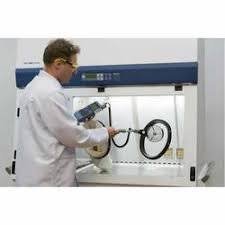Validation of Clean Room Pass Boxes

Validation of Clean Room Pass Boxes
1. Introduction
A pass box is an enclosed space with doors on both sides, installed between two areas of different cleanliness grades.
It allows the transfer of materials with minimum air turbulence and controlled contamination risk.
Types:
-
Static pass box – no air supply, only interlocked doors.
-
Dynamic pass box – with HEPA-filtered air circulation and pressure maintenance.
2. Objective of Validation
To ensure that the pass box consistently:
-
Prevents cross-contamination.
-
Maintains environmental cleanliness.
-
Functions as per GMP and cleanroom standards.
3. Key Validation Tests
a. Installation Qualification (IQ)
-
Verify dimensions, design, and location.
-
Confirm HEPA filter specifications, motor/blower capacity.
-
Check door interlock mechanism, pressure gauges, UV lamp, and electrical connections.
b. Operational Qualification (OQ)
-
Test HEPA filter integrity (DOP/PAO test).
-
Measure air velocity (90 ± 20 fpm typical).
-
Verify differential pressure across filters and chamber.
-
Check door interlocking system functionality.
-
Test UV lamp intensity and safety interlocks.
-
Noise and vibration check.
c. Performance Qualification (PQ)
-
Monitor viable and non-viable particulate counts inside the pass box during operation.
-
Perform microbiological monitoring (settle plates/swab tests).
-
Validate material transfer procedures and decontamination cycles.
-
Verify cleaning/sanitization effectiveness.
-
Check recovery time to reach required particle class after door opening.
4. Acceptance Criteria
-
HEPA filters must pass integrity test.
-
Airflow velocity and pressure differentials within defined limits.
-
No simultaneous door opening (interlock must function).
-
UV lamp must achieve required intensity (if used).
-
Particulate counts must comply with the cleanroom grade.
-
Microbial counts should be within limits.
5. Documentation
-
Validation protocol & report.
-
Calibration certificates of instruments.
-
IQ, OQ, PQ test results.
-
Deviations and CAPA (if any).
-
QA approval for qualification.
🎓 Discover one of the best Pharmaceutical Microbiology course available —click below to explore the course that’s shaping future Microbiology course skills.

